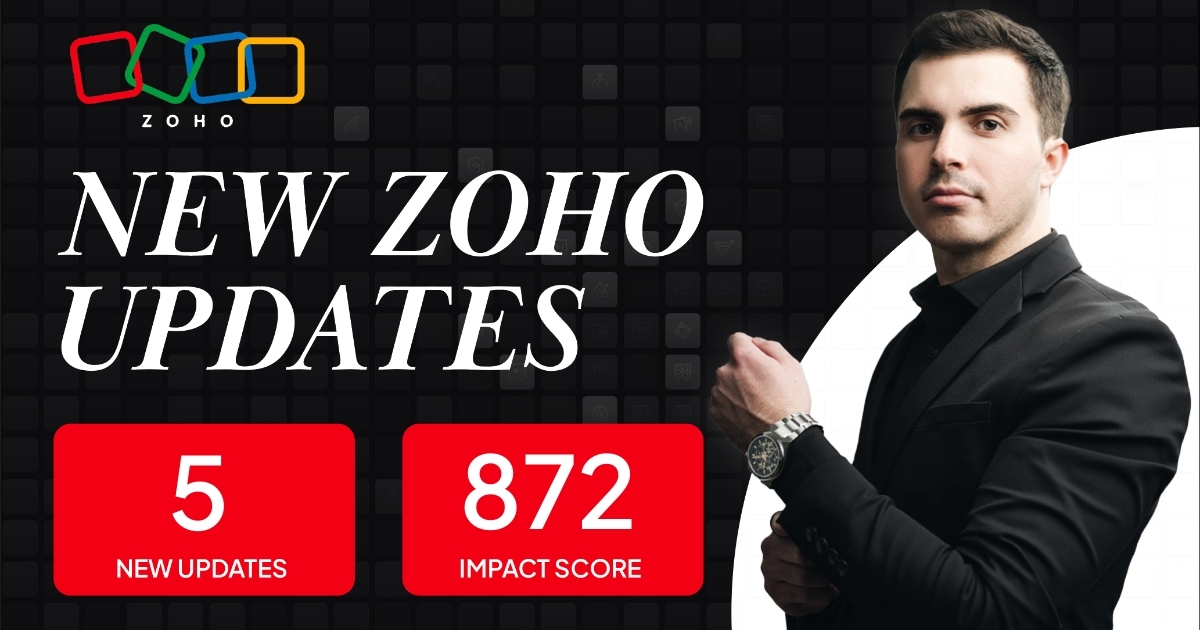
Drew Brockbank
August 20, 2025
5 mins
5 min

.png)

.png)

I’ve helped over 140 companies implement CRM software, and one question often comes up from teams looking for the right CRM for their needs: Pipedrive vs Zoho, which is right for us? The answer, as always, depends on your team’s goals, complexity, and budget.
If you’re a sales-driven organization looking to simplify pipeline management, both Pipedrive CRM and Zoho CRM are top contenders. But they serve different types of sales teams. In this post, I’ll compare these platforms from real-world experience working with growth-stage companies and B2B startups to enterprise sales organizations.
The CRM space is crowded. But when you strip out the hype and look at actual performance, two platforms consistently rise to the top for small to midsize teams: Pipedrive and Zoho.
They’re both intuitive. They both support sales pipeline management. They both offer free plans (with caveats). And they’re both trusted by thousands of sales reps around the world. But there are key differences that will absolutely affect your team’s productivity.
Let’s compare Pipedrive and Zoho across the metrics that matter: UI, customization, automation, integrations, pricing, and customer support.
Pipedrive’s interface is famously clean. It’s a visual CRM through and through, offering drag-and-drop pipelines, deal stages at a glance, and a sales-first experience that reduces the learning curve.
If your team needs a fast, intuitive interface with minimal training, choose Pipedrive. It’s especially effective for organizations that want a plug-and-play CRM with strong visual cues. From my experience, even non-technical users can manage their deals confidently in under an hour.
However, while Pipedrive is simple, Zoho CRM offers more depth at a steeper learning curve. The platform is powerful–think custom modules, advanced features, and deep reporting–but you’ll need a thoughtful implementation plan to avoid overwhelm. That’s where we come in.
If you want a CRM solution that mirrors your company’s unique sales process, Zoho CRM wins. It supports:
With Zoho, you can build a completely tailored CRM that integrates with other Zoho tools like Zoho Books, Zoho Projects, Zoho Desk, or Zoho Invoice. Pipedrive offers some customization, but Zoho is in a different league.
Both Zoho and Pipedrive support deal stages, multiple pipelines, and drag-and-drop deal tracking. But here’s where the platforms diverge:
If you just need visibility into your deals and want quick insights, Pipedrive delivers. If you need cross-functional CRM software that grows with your business, Zoho is the better fit.
This is where Zoho takes the lead. Out of the box, Zoho CRM offers:
Pipedrive has solid automation features, but many require add-ons or third-party integrations. Zoho does more natively, meaning fewer subscriptions and less technical debt.
Pipedrive integrates well with Google Workspace, Slack, Zoom, and common sales tools. But when we compare Pipedrive vs Zoho on ecosystem depth, Zoho wins by a mile.
Zoho offers:
If your business uses or plans to use other Zoho tools, the ecosystem advantage is real. This is one of the biggest reasons clients switch from Pipedrive to Zoho CRM.
Both platforms offer pipeline views and standard reports. But Zoho adds much more:
Pipedrive does well with visual sales dashboards, but Zoho wins for advanced features and analytics customization.
Pipedrive:
Zoho CRM:
If you’re comparing on price alone, Zoho often gives you more value, especially when factoring in the broader suite of tools.
Pipedrive has good documentation and fast chat support. But for complex sales process implementations, you’ll need outside help.
Zoho CRM has a steeper learning curve, but expert-led onboarding (like what we offer at Brockbank Consulting) can flatten that curve quickly. We also install our proprietary Autopilot SOP System to get your sales reps trained and productive faster.
If you want to choose Pipedrive, do it for simplicity. It gets out of your way and lets your team focus on selling.
If you want deep automation, integrated project management, and advanced reporting, choose Zoho.
Pipedrive and Zoho are two of the best CRMs for a reason. If your team wants an intuitive experience with a quick setup, Pipedrive’s features are a strong fit.
But if you’re building a system for long-term growth, Zoho CRM is hard to beat. It’s customizable, scalable, and deeply integrated with both sales and marketing platforms. Plus, Zoho offers a free plan that makes testing the platform low-risk.
Want help deciding? I’ve implemented both Zoho and Pipedrive CRM for teams in over 16 industries. If you’re serious about building a CRM that fits your business needs, let’s talk.
Book a free consultation, and we’ll compare Pipedrive vs Zoho based on your exact use case.
No upsell. Just honest, actionable advice.





Book your free consultation to learn how Zoho should work for your business. We will show you the best practice ways to set it up and use it for your industry so you get the most out of Zoho.


Dive deeper into our expert articles.
.jpg)

.png)